| 1 | Dinnik’s viper |
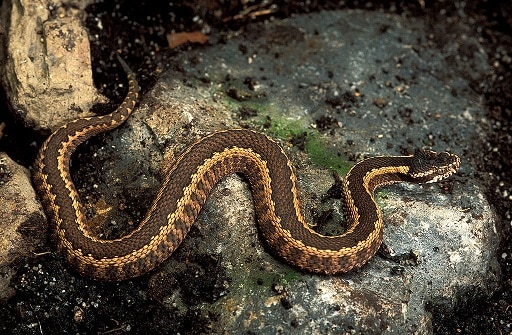
The Vipera family, AKA the true vipers, has 21 members in Eurasia. The adder is the most famous, but there’s a hidden world of more obscure members, one being Dinnik’s viper. This lives solely in the Caucasus mountains of extreme southern Russia, which straddle the borders with Azerbaijan and Georgia.
Dinnik’s viper lives at high altitudes of at least 1000 metres, occasionally reaching 3000 metres. Its favourite habitat is sub-alpine, with open meadows strewn with boulders and thorny juniper bushes. Dinnik’s viper doesn’t encounter human beings often, and little is known about its venom. Males are slighter shorter than females, reaching a maximum of 41.2cm versus 48.6cm.
Dinnik’s vipers lay live young, usually 3-7, which are born in August to September. They have a wide variety in colours. Ornate gold and black is common, like this is an elite viper with its own personal mountain kingdom. But there’s also grey and black, and in 2021 researchers stumbled across 3 fully black (melanistic) Dinnik’s vipers. These were found above 2000 metres in Georgia, and it’s assumed that they were black to allow higher absorption of sunlight. Dinnik’s viper is now endangered, as its mountain territory is becoming increasingly fragmented.
| 2 | Forest steppe adder |
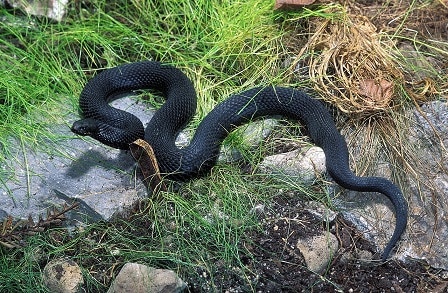
The resident viper of eastern Ukraine, and Russian areas over the border. Rather than a fluke, this version is dense black a majority of the time. One of its bases is the Kharkiv region of northern Ukraine.
Forest steppe adders share Ukraine with the main adder (Vipera berus), but live in separate habitats. This viper loves broad-leafed forests adjacent to river banks. They’re also found in humid bogs inside pine forests. They generally prefer more cluttered areas; a 2006 study found that they like spots with rotting logs, heavy bush cover and an abundance of rodent holes to hide in. Their favourite hibernation spots are eroded forest slopes with fallen trees.
A bite from the forest steppe adder causes swelling, pain and hypotension. They also have moderate neurotoxic qualities, causing progressive limb paralysis. Autopsies of bitten mice revealed that heart failure was the cause of death, and the kidneys showed haemorrhaging. 65% of the toxin soup is PLA2s, while 19% is serine proteases. The study above also found that they have a regular neighbour: they lived alongside grass snakes in 60% of their habitats.
| 3 | Orlov’s viper |
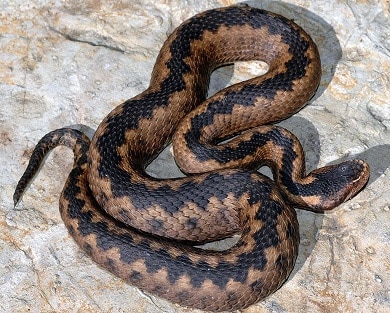
Orlov’s viper specialises in being muddy brown, against a dense black zigzag running down their spine. They also have white markings on their face, just on the lower lip. Vipera orlovi inhabits the Caucasus mountains, but only small pockets within Russia. They lie to the northwest of Dinnik’s viper, and don’t stray into Azerbaijan or Armenia.
Orlov’s viper is another small species, measuring 60cm. Its venom contains 135 proteins, and consists of 22% PLA2s, and 24% serine proteases. No actual human bites are on record, but these toxins are known to shred human skin tissue.
Orlov’s viper is endangered and declining rapidly. They live in one region on the northeast coast of the Black Sea – Krasnodar Krai, a popular tourist hub with many sprawling villas. They stick to altitudes of 400-950 metres, and areas with a Mediterranean climate, such as warm riparian glades and juniper forests.
A survey from 2014-2016 found that Orlov’s viper had disappeared from some former locations, including tourist hotspot Gelendzhik. As well as the usual mammals, Orlov’s viper eats insects, frogs and reptiles. They’re one of the least selective vipers in their diet. This might be the only thing keeping them from extinction.
| 4 | Steppe viper |
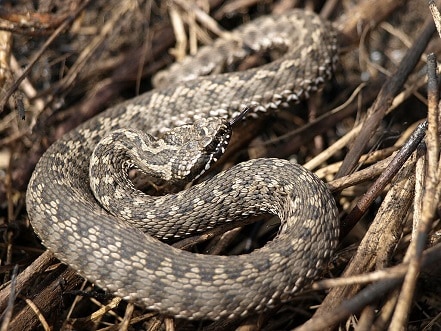
A viper of more open areas, such as hillsides, forest edges and shrublands. Renard’s viper is also declining its local enclaves, yet has such a large range that they won’t be going extinct any time soon. You can find Vipera renardi from Ukraine, to China, to the wastelands of Mongolia. They inhabit a range of altitudes, from sea level to a maximum of 2500 meters.
Vipera renardi has a calmer temperament than the nearby adder. They’re timid, reluctant to bite, and seek to escape if possible. Renard’s viper bites rarely kill. Instead, they cause agonising local symptoms such as extreme pain, redness and swelling that spreads far beyond the bite sight. There’s also mild neurotoxic symptoms like dizziness and drowsiness. As they live near normal Ukrainians rather than rugged mountains, there’s more bite data than for some species. No human deaths have been recorded, but there’s a few recorded horse deaths.
This is another insect-loving viper, with a specially targeted venom towards them. As adults, they move onto mammals, but keep insects as a handy backup. Steppe vipers don’t get on with each other; placing males together in captivity results in them wrestling for dominance.
| 5 | Caucasus viper |
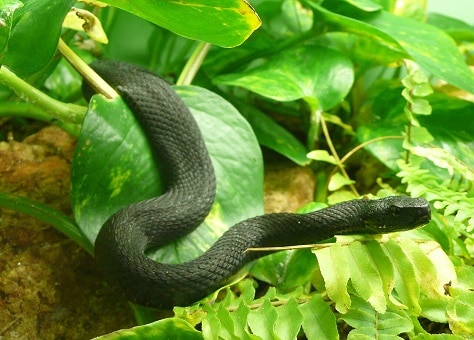
Another Russian viper, spreading southwards into Georgia and northeast Turkey. This species lives in forests on the east coast of the Black Sea, one of their hotspots being the Georgian city of Balumi. Moistness is ideal for this snake; a forested hillside or bottom of a wet ravine is perfect. Vipera kaznakovi has been found in azalea and cherry groves, and multiple forest types from willow to beech to chestnut.
The Caucasus viper has a non-fussy diet, featuring mice, lizards and frogs alike. According to a 2016 study, its venom contains 116 proteins. 3 other viper species were tested, and Vipera kaznakovi contained 6 unique toxins. Its main toxins are PLA2s (41%), which attack internal organs, and snake venom metalloproteinases (14%), which cause necrosis and tissue damage. The venom also contains hyaluronidase, a tactical ingredient, which dissolves skin cells to allow venom to diffuse faster. All this is just theoretical though – there’s no detailed reports on human bites, except vague mentions of occasional deaths in old Russian journals.
This species has an IUCN tag of “endangered” – they’re not in mortal peril, yet the expansion of agriculture and tourism along the Black Sea coast is causing local populations to vanish.
| 6 | Darevskii’s viper |
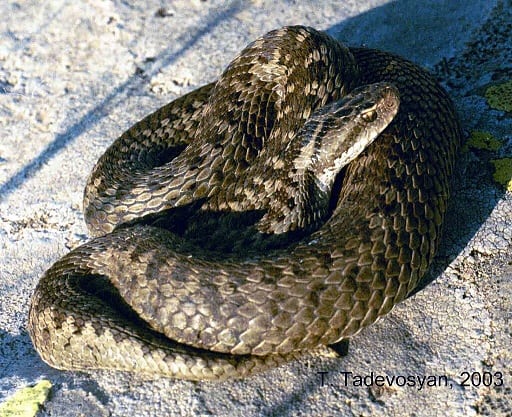
One of the smallest true viper members, with a record length of 42.1cm in females. Consequently, its bite doesn’t pack much punch, and is rarely fatal. Darevskii’s viper lives in an extremely narrow pocket – border regions of Armenia, northeast Turkey and southern Georgia. They’re often found on sweeping hillsides with a piercing wind blowing, maybe with a herd of sheep eating grass. Scree slopes on hillsides are one favourite for this viper, altitudes above 2000 metres.
This viper has rough scales to touch (though touching isn’t advised). They also have strong gender differences, AKA sexual dimorphism. Males have bright black and yellow with a sharp contrast, while the female colours are duller. This species is classified as “endangered” by IUCN, but is now protected in one zone – Arpilich National Park in Armenia. Overgrazing of livestock animals is one of their greatest threats.
In the wild, Darevskii’s vipers split their diet between mammals and reptiles. Armenian lizards, common voles and European snow voles are confirmed species. In captivity, they happily eats rats, and they digest food particularly rapidly – one rat was gone within 3 days. This led to a theory that they need especially high amounts of food.
| 7 | Alburzi viper |
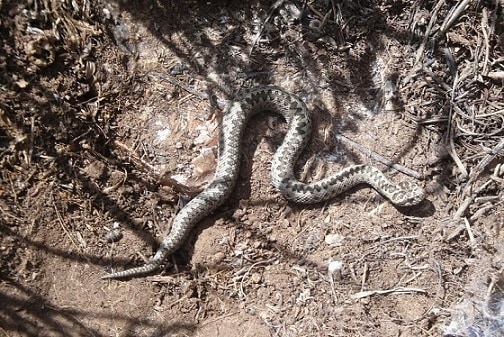
A 50cm species which inhabits Armenia, Georgia, and also northwest Iran. It’s especially common in mountainous areas of Azerbaijan and was first discovered in 1933. The Alburzi viper (Vipera eriwanensis) has 54-78 zigzags down its spine and reaches altitudes of 3000 metres. This is a species of rocky mountain steppe and high altitude meadows. They also appear under juniper bushes on the edges of dormant volcanoes. This species is never common, even where it thrives. It’s always in low densities, as it’s rare for scientists to find more than 5 per 1km of route explored. Alburzi vipers can also appear in pasture land near villages, at lower altitudes.
The Alburzi viper has never been found in Russia, but new locations are constantly being discovered. It was originally thought to only live as far north as Turkey’s Aras river, but in 2005, it was found beyond the river, 210 miles further west of its previous known limit. It’s believed that the Alburzi viper is most closely related to Darevskii’s viper.
Some of these vipers can be difficult to distinguish at first glance. However, Alburzi vipers have thinner zigzags generally, with beige (or grey) covering more areas on their flanks. With Dinnik’s viper, the zigzag is far huger, even so wide that it smooths off the edges and just becomes a thick stripe. Then there’s Orlov’s viper, which has a sloppier, less sharply defined zigzag.
| 8 | Atlas mountain viper |
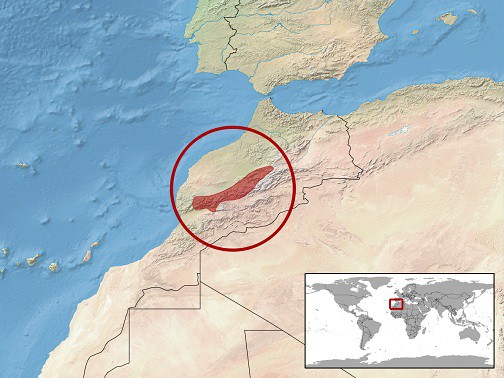
The only African member of the true viper family. There’s bush vipers (Atheris) and mole vipers (Atractaspis), but only the Atlas dwarf adder belongs to the official Vipera family.
This species averages at 50cm, and inhabits the high Atlas mountain range, resting on rocky slopes near crumbling ridges. They inhabit bushy gullies and mountain passes where humans rarely tread, as well as farming villages lower down. Vipera monticola was originally thought to be a subspecies of Lataste’s viper in Spain. They share the same protruding nose horn, but DNA analysis revealed a genetic gulf of 6% between them.
Vipera monticola is a mixture of grey and brown with no clear patterns, no striking zigzags like its Russian relatives. This is one of the highest Vipera members, reaching 3900 metres above sea level in the Atlas mountains of Morocco. Vipera monticola is a naturally rare species, which has low population densities, even where mankind has no presence. They move by day and loves to bask in the sun on rocky slopes. Atlas dwarf adders are such experts at sucking up warmth that they can leave hibernation while there’s still melting snow patches around.
| 9 | Altai viper |
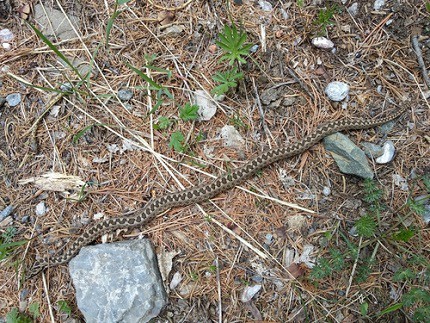
This viper was only discovered in 2010. While surveying eastern Kazakhstan, scientists stumbled across several colonies of a completely unknown viper, lurking in remote foothills. It was named Vipera altaica after the Altai mountain range in which it was discovered.
Out of 30 Altai vipers examined, none exceeded 40cm – the maximum size was 39.9cm. On the surface, it looked similar to the Caucasus meadow vipers out west. However, it had a far higher number of belly scales (an average of 146), despite its small size. The belly was also white in some snakes. It had the classic zigzagging pattern, and scientists deemed it to be most closely related to the steppe viper (Vipera renardi). This lived in Kazakhstan as well, yet didn’t overlap with the new Altai viper. Somehow, this new colony had become separated in the Altai mountain foothills and diverged.
The Altai viper liked warm steppe country, with an abundance of bushes and shrubs, rather than claustrophobic forests. They stuck to altitudes of 200-1200 metres, while on the higher mountain ridges to the west, the Altai viper disappeared and Renard’s viper took over again.
| 10 | Lotiev’s viper |
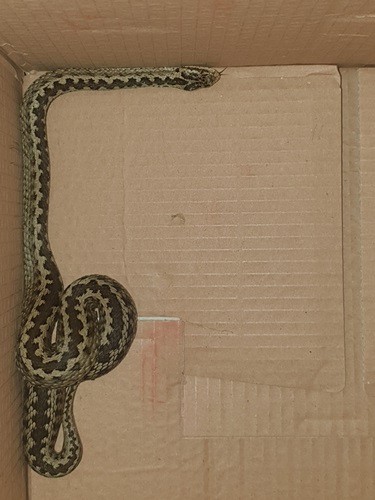
A Russian viper with a strong zigzagging pattern. Vipera lotievi is officially listed as “near threatened”. This is a mysterious snake. As recently as 2001, only 8 locations for Lotiev’s viper were known. Then a series of expeditions were conducted, and now 70 colonies within the Caucasus mountains are mapped out.
Nevertheless, Lotiev’s viper inhabits just a narrow slice of the Great Caucasus mountains in southern Russia. They live at altitudes of 1200-1800 metres, and gravitate towards more open areas, avoiding sheltered forests. That means alpine meadows, scrubland, and scree slopes. Vipera lotievi is also found on the lower slopes of Mt Elbrus, the highest mountain in Europe (and Russia).
Like its neighbours, this is a small viper, rarely exceeding 60cm. A 2007 study found that Lotiev viper venom was the most specialised against insects, alongside the steppe viper, which came second. This study was conducted specifically against field crickets. The same study found a large proportion of insects in Vipera lotievi’s diet, whereas adders eat none. Locusts are one prey, and after biting one on the stomach, the locust can be immobilised within 6 seconds. Barely any data is available on bites in humans, and it’s wisest not to be the first to find out.